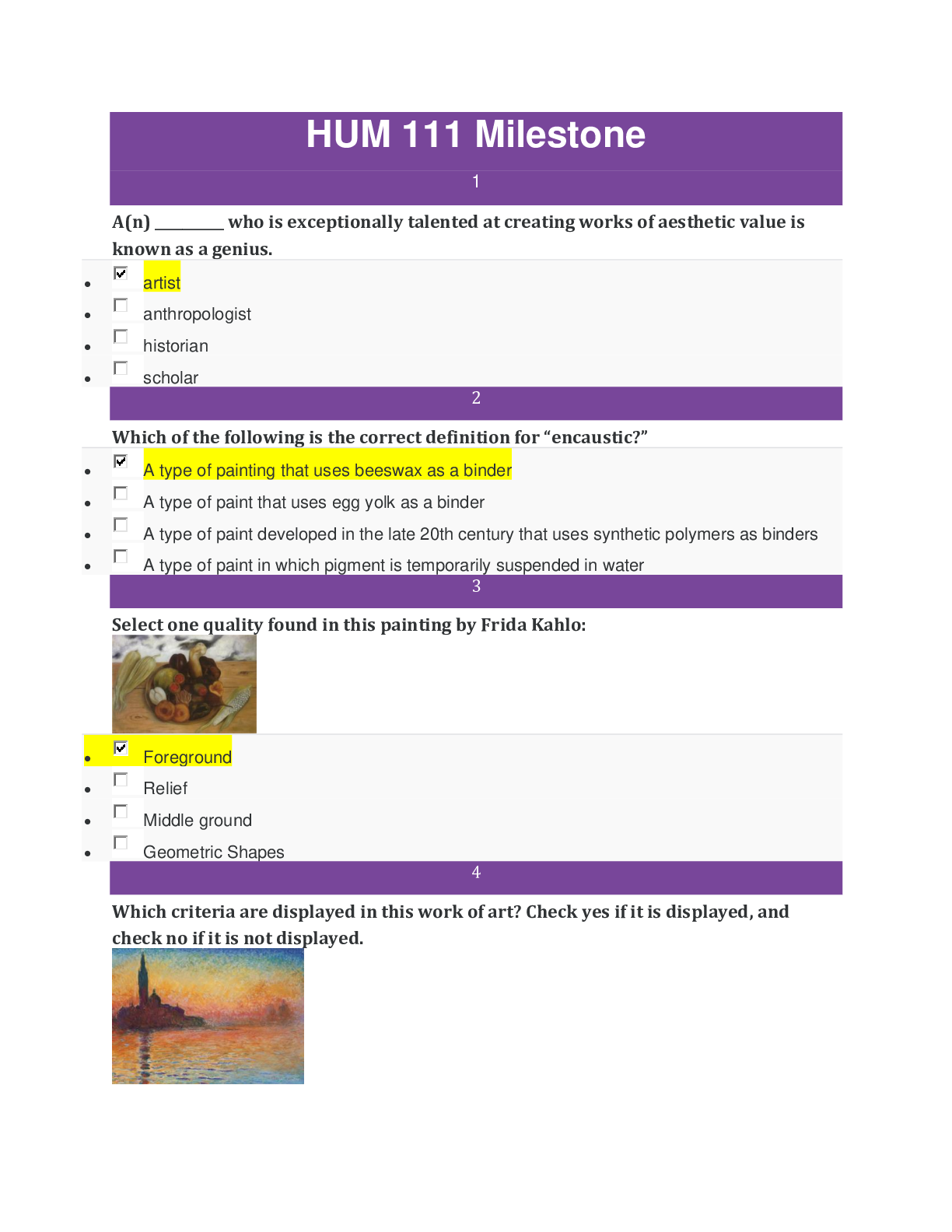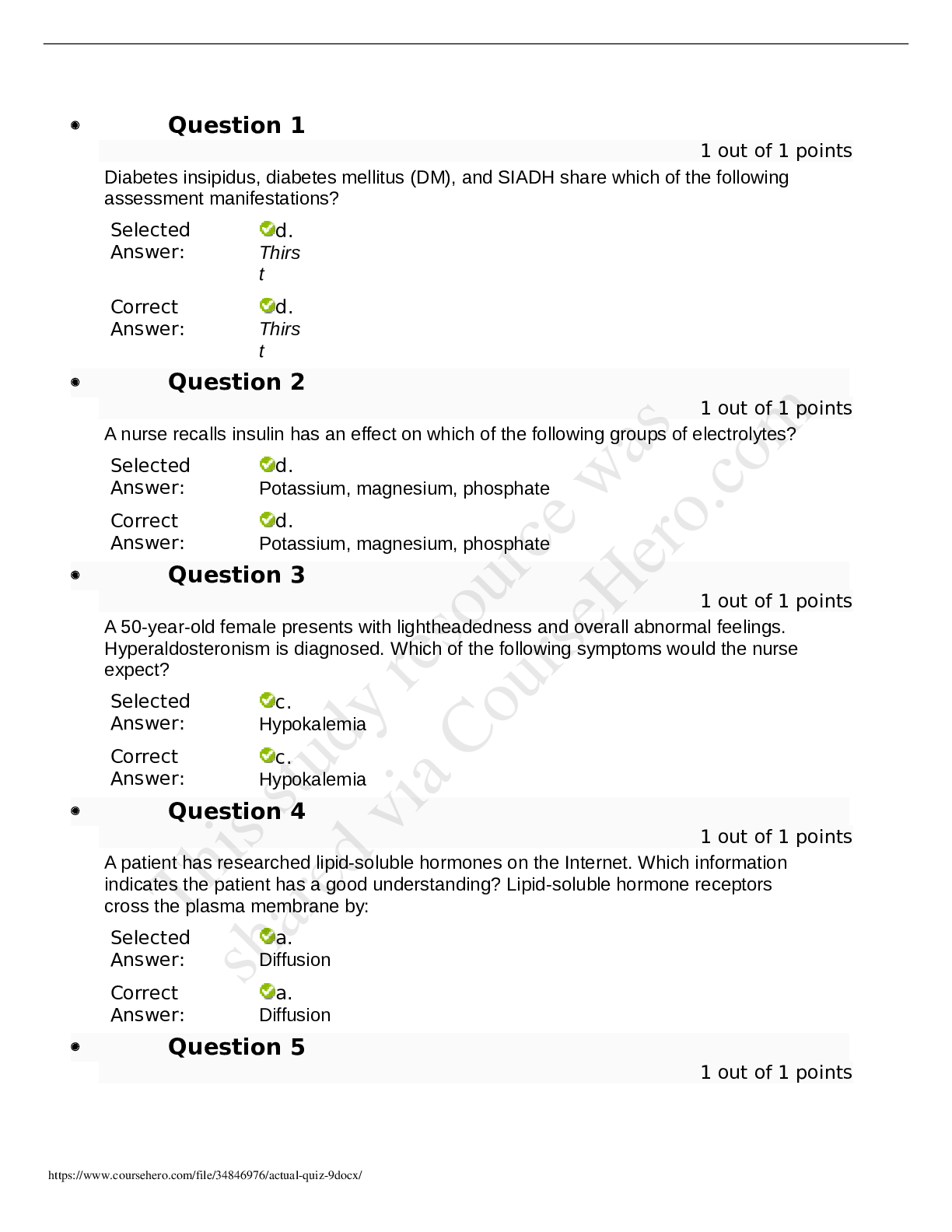Astrophysics > QUESTIONS & ANSWERS > AFOQT Test Questions and answers, latest update, Graded A+ (All)
AFOQT Test Questions and answers, latest update, Graded A+
Document Content and Description Below
AFOQT Test Questions and answers, latest update, Graded A+ Manufacturer's Empty Weight (MEW) - ✔✔the total weight of the aircraft as it was built. Includes systems and components required for... the aircraft to operate. Does NOT include the weight of the baggage, passengers, or either usable or unusable fuel or fluid. Operating Empty Weight (OEW) - ✔✔the MEW plus the weight of the crew, fluids, unusable fuel, and the equipment required for flight. Does NOT include baggage, passengers, or usable fuel. All-Up Weight (AUW) or Aircraft Gross Weight (AGW) - ✔✔the total aircraft weight at any given moment during a flight. The AUW decreases as fuel and fluids are consumed during the operation of the flight. Maximum Landing Weight (MLW) - ✔✔an aircraft's weight limit for landing. Exceeding this weight increases stress on the landing gear and may affect the distance required for a safe landing Maximum Zero Fuel Weight (MZFW) - ✔✔the permissible weight of an aircraft with its contents and includes unusable fuel. The total MZFW excludes the weight of usable fuel on board and any consumable fluids Maximum Takeoff Weight (MTOW) - ✔✔an aircraft's weight limit for takeoff. Exceeding this limit increases the power required for takeoff, lengthens the runway distance needed for a successful lift off, and places excess stress on the aircraft structure Maximum Ramp Weight (MRW) - ✔✔the weight limit for an aircraft to taxi or be towed on the ground Flight Envelope - ✔✔Encompasses the limits of speed, altitude, and angle of attack required by any aircraft to maintain a stable flight. An incorrect combination of these may result in a stall, during which the aircraft experiences a decrease in lift and a reduction in airspeed Angle of Attack (AOA) - ✔✔the angle measured between the direction of airflow against the wing and the chord (an imaginary reference line the extends from the leading edge to the trailing edge of the wing Ailerons - ✔✔Located on from the midpoint of the trailing edge of the wing to the wing's tip. Help with roll control Flaps - ✔✔located on the trailing edge of the wing; increase wing's surface area and deflect the air flow downward. Allow planes to lift at slower speeds. Spoilers - ✔✔Located directly forward of the trailing edge flaps to assist the ailerons in roll control and to act as speed brakes for descent and landing. Extend upward to help reduce airspeed (ex: raised when landing to help assist brakes in slowing airplane down) Drag - ✔✔air resistance experienced during flight Parasite Drag - ✔✔any "parasite" on the structure of the aircraft: low air pressure in the tires, skin friction (any rough spot on the skin of the aircraft structure) This, along with any rivet heads that may project above the skin, causes resistance to the air current flowing across the wing. Profile Drag - ✔✔Produced mainly by the shape of the aircraft. A smaller slimmer aircraft reduces profile drag. Induced Drag - ✔✔When, at the back of the wing, air flowing rapidly across the top meets air flowing more slowly underneath, creating a vortex. This type of drag depends on the performance of the aircraft. When lift, airspeed, and AOA increase, induced drag automatically increases too. When an airplane increases its lift, which statement is true about the air pressure flowing above and below its wings? - ✔✔Air pressure is lower above the wings and higher below the wings, producing lift. Bernoulli's Principle - ✔✔As the speed of a fluid increases, its pressure decreases. Air flows faster over the top of the wing leading to lower pressure. Air flows slower on the bottom of the wing, increasing pressure. Upward push creates lift! Longitudinal Axis (Roll) - ✔✔runs lengthwise from the nose to the tail Lateral Axis (Pitch) - ✔✔runs wingtip to wingtip Vertical Axis (Yaw) - ✔✔Runs perpendicular to the wings at the center of the aircraft Trim - ✔✔Aircraft's desired position. Roll - ✔✔along the aircraft's longitudinal axis; controlled by ailerons, located at trailing edge of the wings. Pitch - ✔✔the lateral angle of ascent or descent; controlled by elevators, located in the rear portion of the horizontal tail assebly Yaw - ✔✔Controlled by the rudder, located in the rear part of the tail assembly; movement of the rudder causes the nose to move from side to side. Pressure Altimeter - ✔✔in the cockpit based on atmospheric pressure. Calibrated automatically for 29.92 of mercury (Hg). Pilot resets the pressure altitudeindicator after departing an airfieldto ensure the correct pressure altitude of the aircraft is displayed for the destinatin airfield Aircraft perform more efficiently in what weather? - ✔✔Colder wether because the air is denser than warm air. (Except if air drops too low and de-icing is necessary) [high air density increases engine performance] Fuselage - ✔✔the main body of an aircraft that holds the crew, passengers, and cargo. Wings, tail, engines, and landing gear attach to the fuselage, so it must be extremely strong to withstand stresses while minimizing weight. Also helps stabilize plane in flight Truss Struture - ✔✔Consists of welded steel-tubing longerons separated by diagonal members to endure the loads placed upon the aircraft Monocoque Structure - ✔✔consists of a thin sheet-aluminum alloy curved to fit the shell of the fuselage. This metal skin is designed to withstand the stress of loads and minimize the total weight the total weight of the aircraft. Monocoque Structure - ✔✔consists of a thin sheet-aluminum alloy curved to fit the shell of the fuselage. This metal skin is designed to withstand the stress of loads and minimize the total weight the total weight of the aircraft. Semi-Cantilever Wing - ✔✔requires both internal bracing and external support from struts attached to the fuselage Biplane - ✔✔an airplane with two pairs of wings Thickness - ✔✔a percentage of the wing chord; typically ranges from 6.5 to 13.5 percent Camber Line - ✔✔amount of curvature of the wing. Imaginary line runs halfway between upper and lower surfaces of the wing. Chord - ✔✔the imaginary line in an airfoil; establishes a baseline for the amount of camber and width required of the wing along with its wingspan How many types of wing platforms are there? - ✔✔4 (rectangular, elliptical, tapered, and swept) Rectangular wing planform - ✔✔the simplest type, highly inefficient, and typically used for light general aviation Elliptical wing planform - ✔✔the most efficient style, with the lowest possible induced drag Tapered wing planform - ✔✔cross between a rectangular and an elliptical, providing better lift distribution and moderate efficiency. Aircraft with these wings have a wide range of speeds Swept wing planform - ✔✔tapered back to reduce drag. Includes slightly swept, moderately swept, and sharply swept types. Disadvantages: tendency to twist under stress The amount of lift generated is dependent on the difference between the camber line and the _________ - ✔✔chord line (when the measurements of the chord line and camber line differ greatly, the curvature of the wing will provide more lift) powerplant - ✔✔encompasses the engines and propellers as well as the induction, exhaust, electrical, cooling, lubrication, and fuel systems reciprocating engine - ✔✔An engine that converts heat energy created by combusted fuel mixed with air into reciprocating piston movement, which in turn is converted into a rotary motion via a crankshaft. (typically aircraft with cruising speed not exceeding 250 mph) gas turbine engine - ✔✔Engine that burns natural gas, sending a hot, high-pressure stream of gas through a turbine connected to an electrical generator. (larger more powerful planes) turbo-supercharged reciprocating engine - ✔✔aircraft traveling at high altitudes (over 30,000 ft) Turbojet engine - ✔✔A turbine engine which produces its thrust entirely by accelerating the air through the engine. (those that operate at Mach 1 or higher) during takeoff, engines operate at ________ - ✔✔maximum performance fixed pitch propeller - ✔✔pitch has a blade angle that can't be changed by the pilot. The propeller is connected directly to the engine's crankshaft; engine power rotates the crankshaft as well as the propeller, and the propeller converts the engine's rotary power into thrust Variable pitch propeller - ✔✔Allows the pilot to adjust the blade pitch during flight [Show More]
Last updated: 2 years ago
Preview 1 out of 25 pages

Buy this document to get the full access instantly
Instant Download Access after purchase
Buy NowInstant download
We Accept:

Reviews( 0 )
$10.00
Can't find what you want? Try our AI powered Search
Document information
Connected school, study & course
About the document
Uploaded On
Aug 25, 2022
Number of pages
25
Written in
Seller

Reviews Received
Additional information
This document has been written for:
Uploaded
Aug 25, 2022
Downloads
0
Views
119











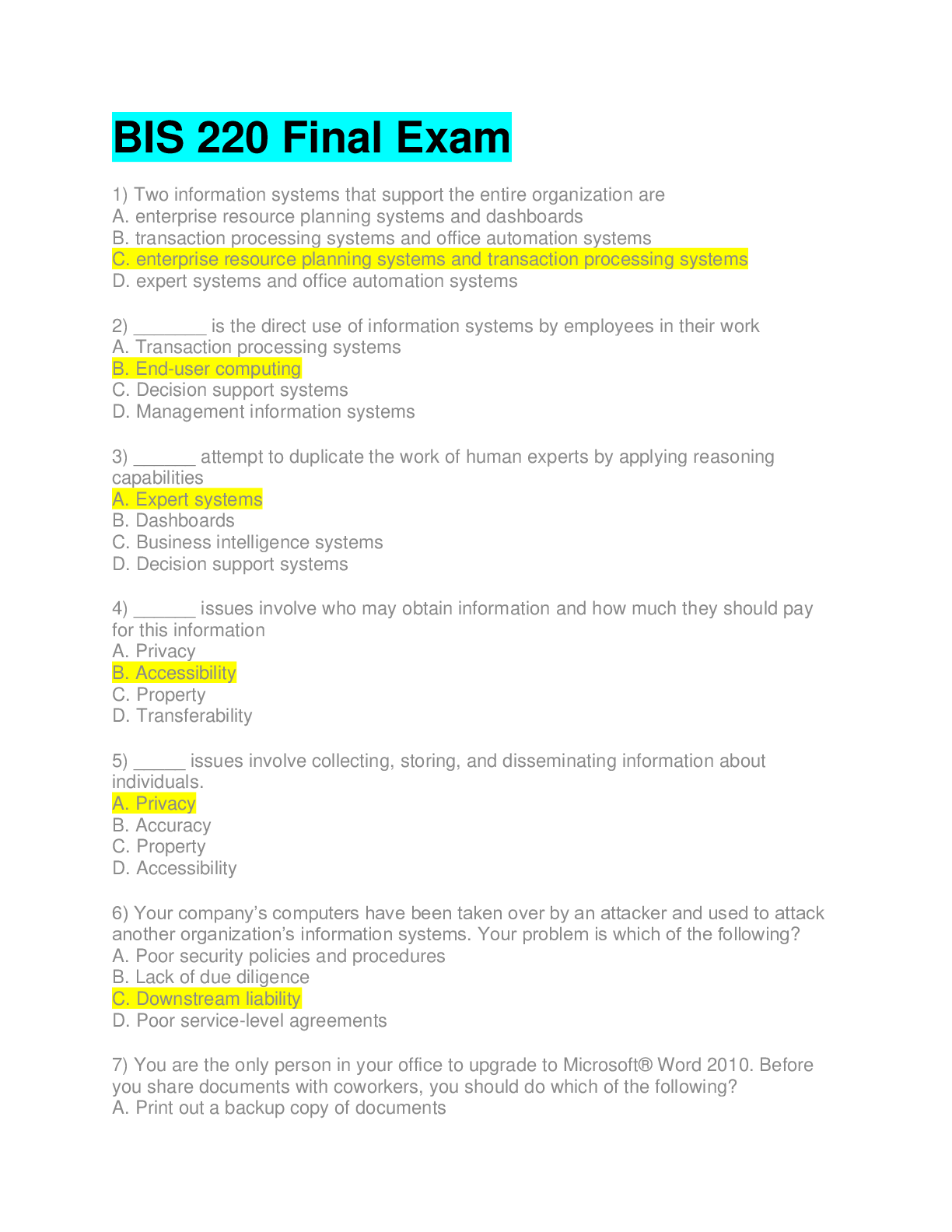
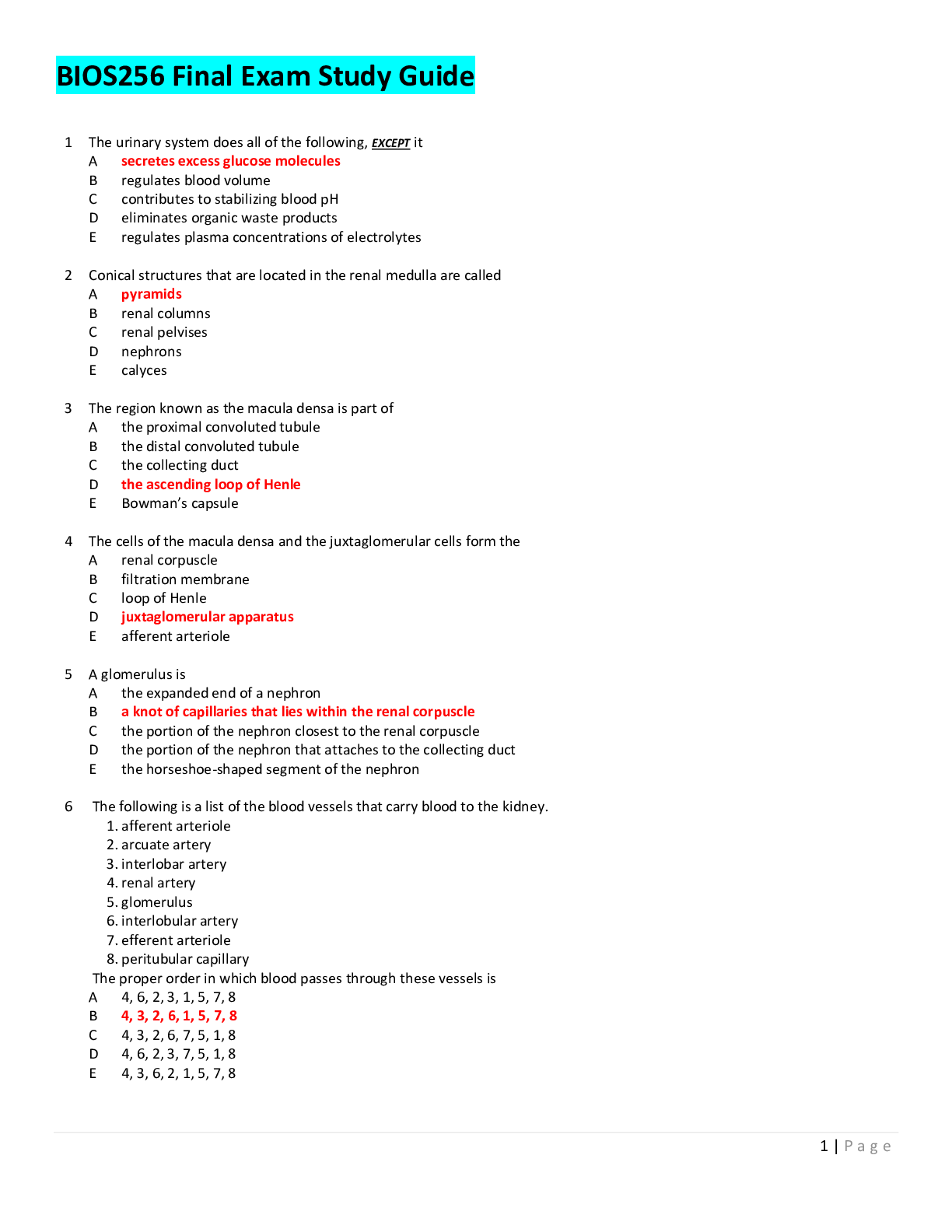
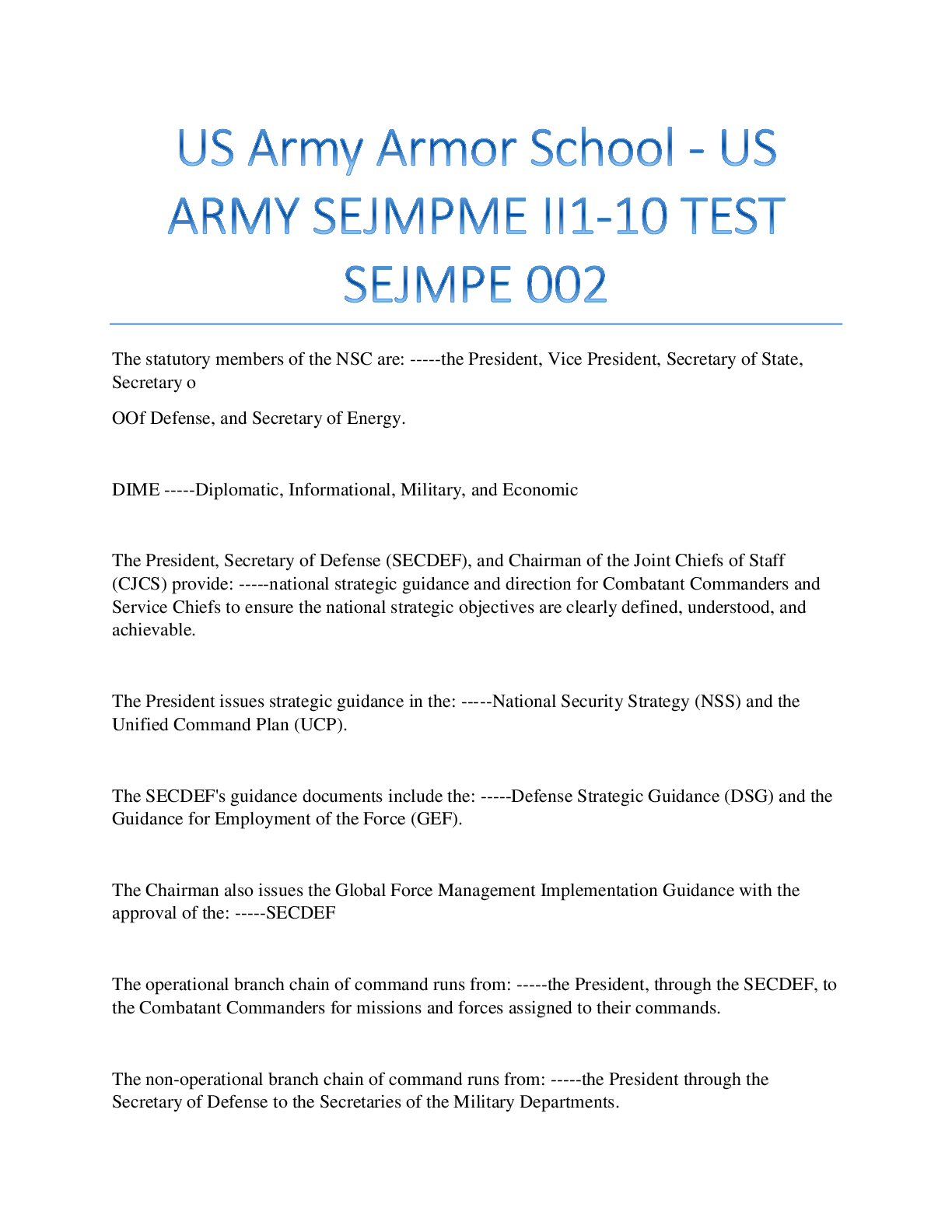

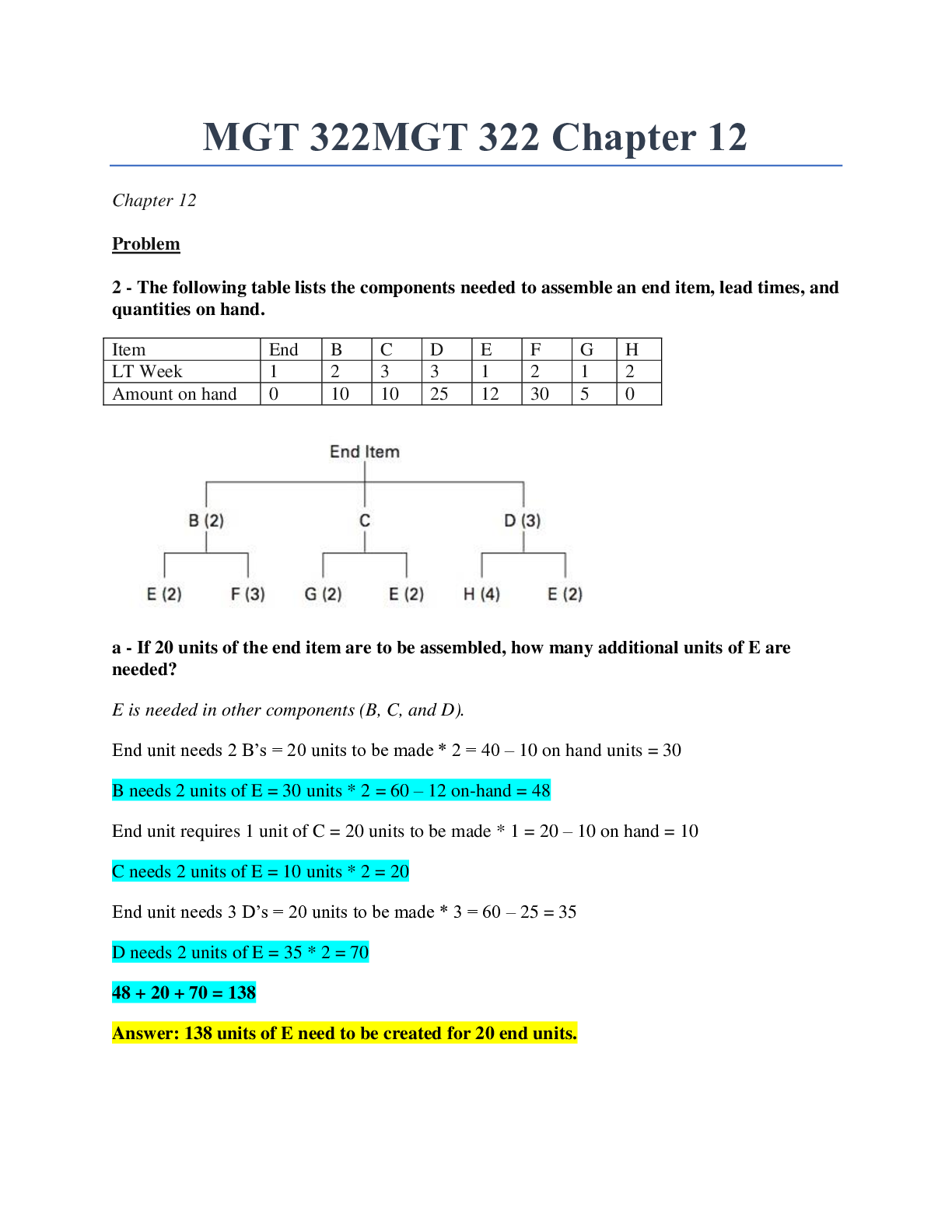
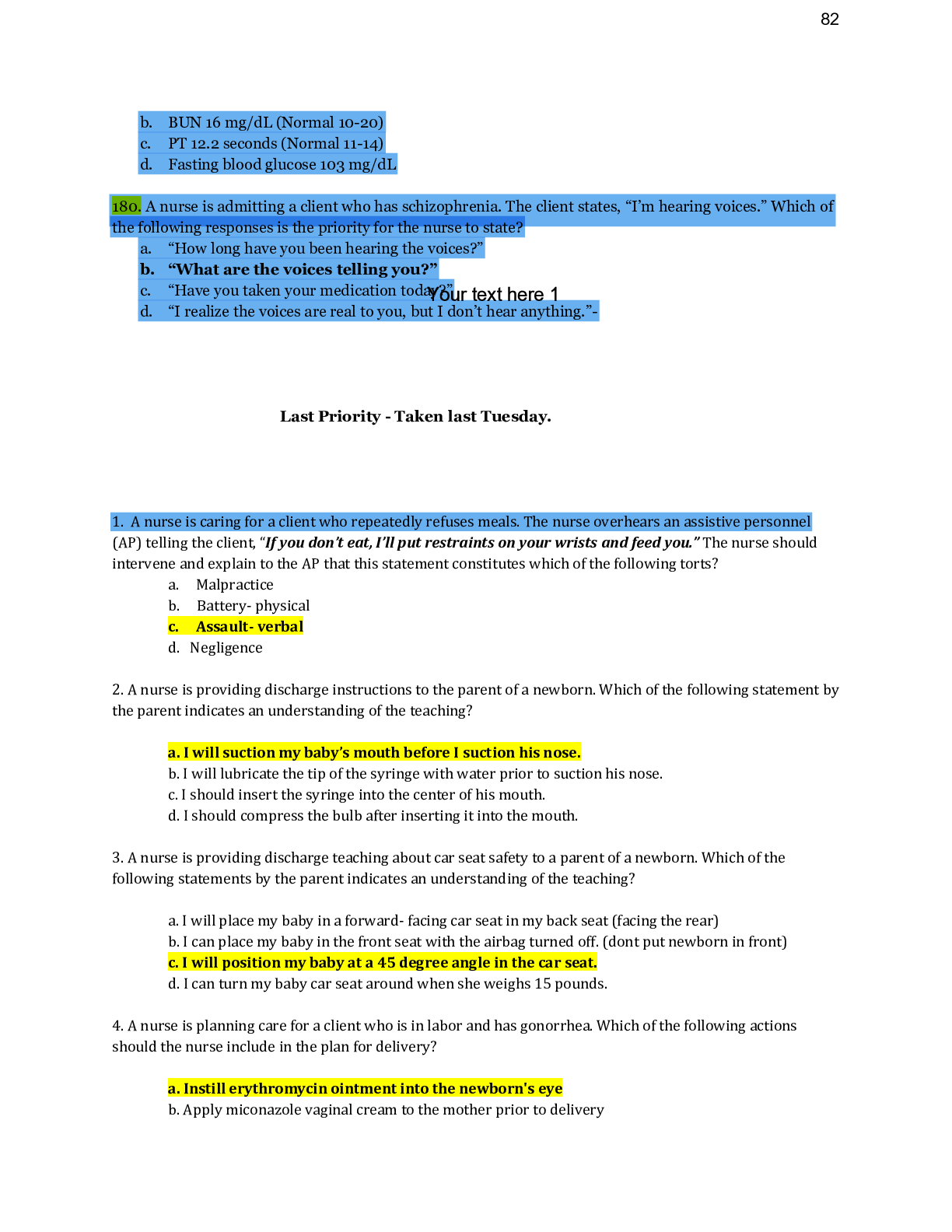
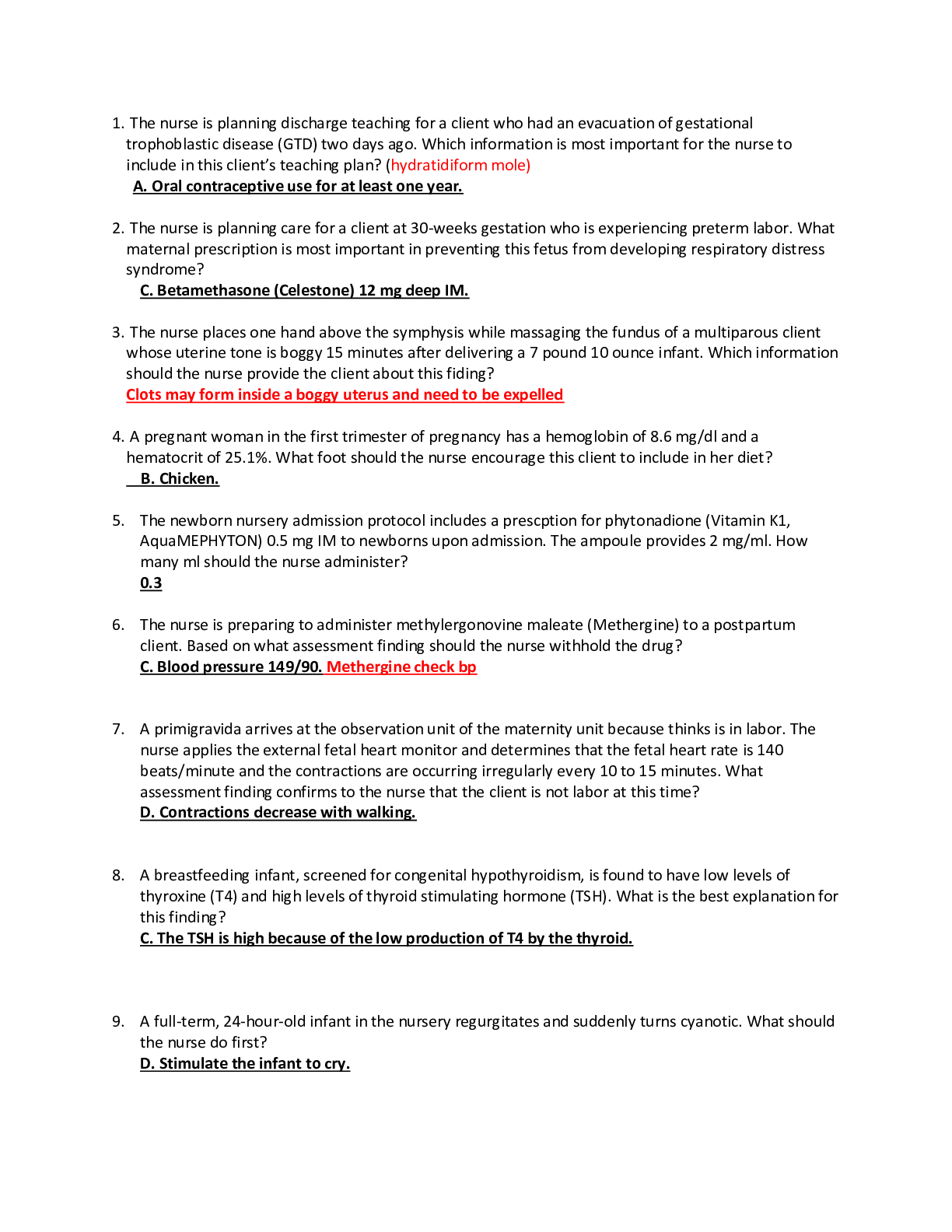
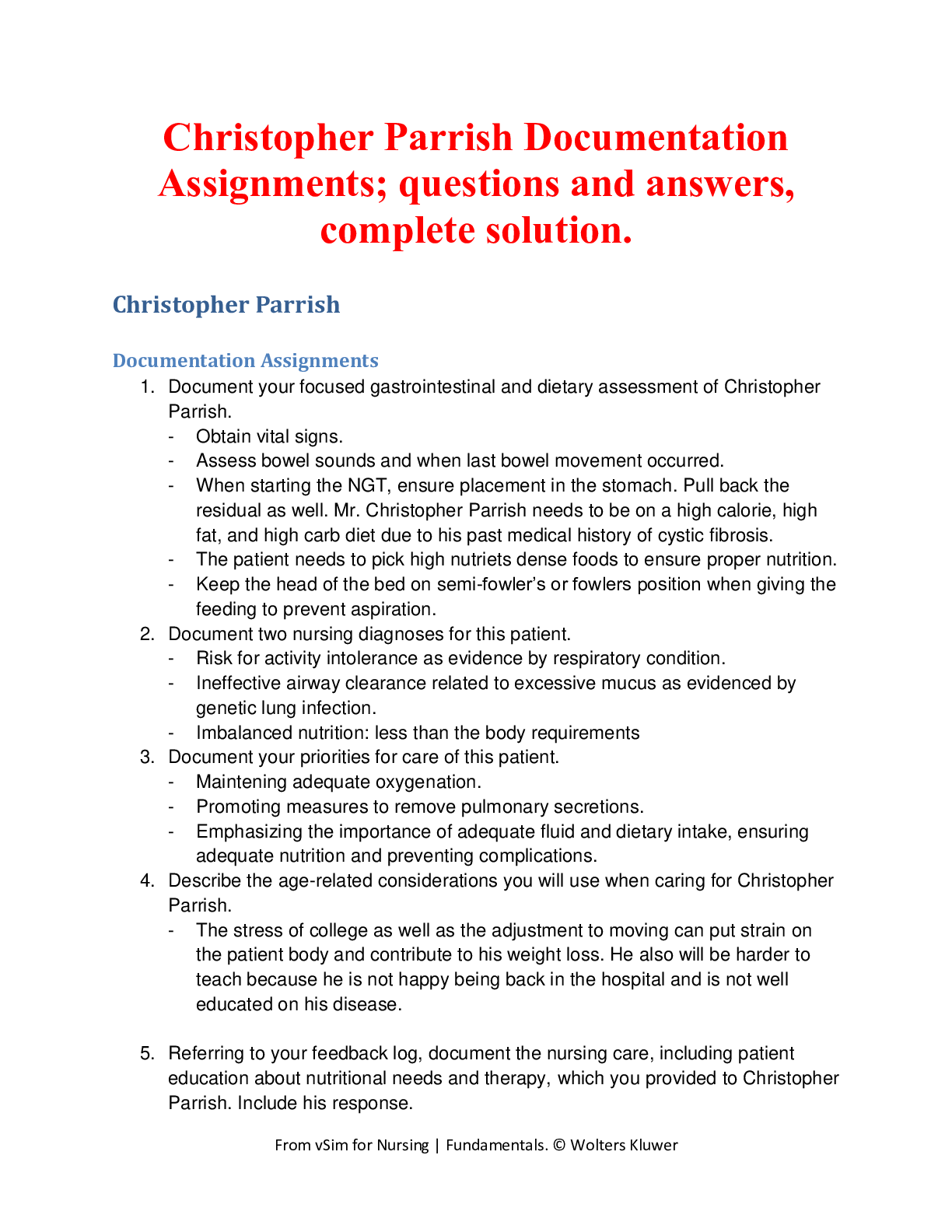
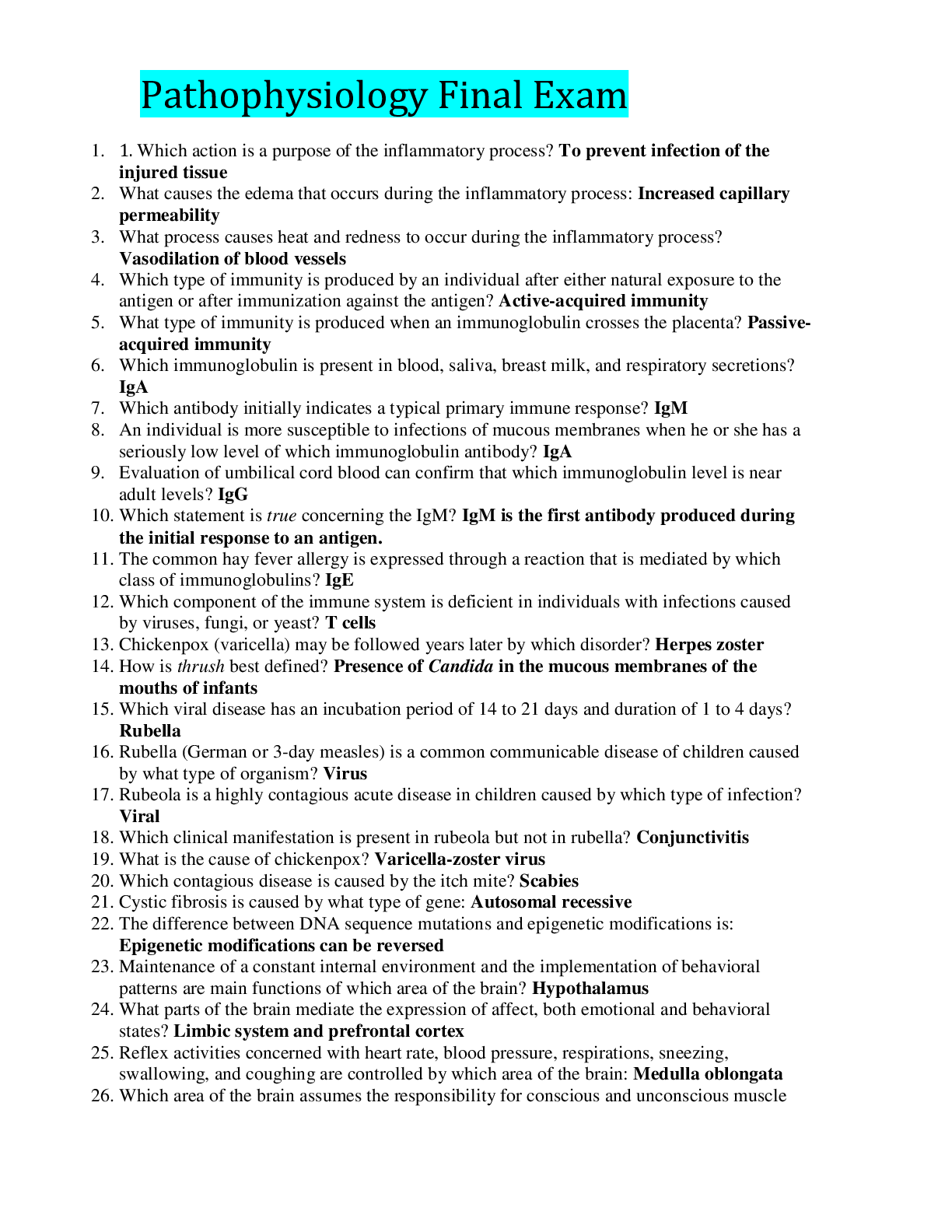
.png)
